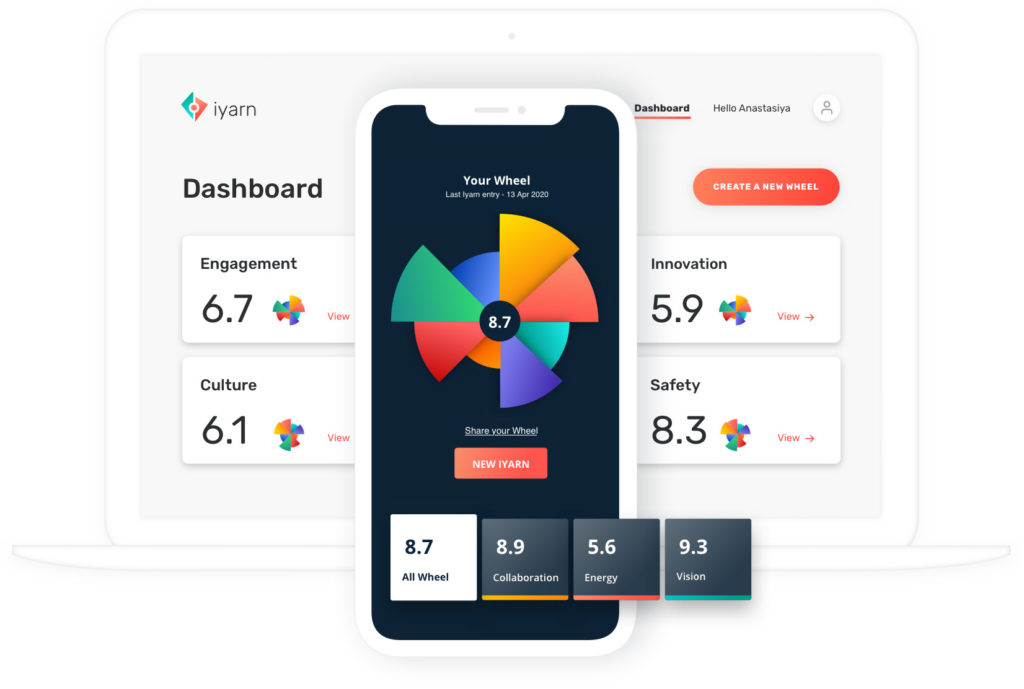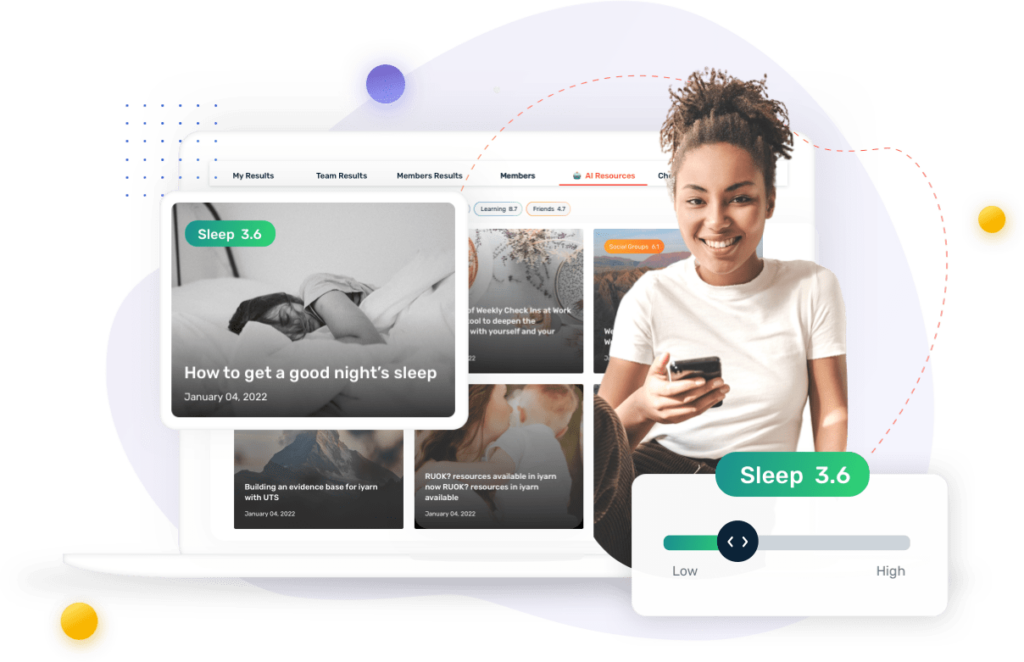A Mental Health Check In for the Workplace
Workplaces have an important part to play in mental health, particularly on occasions like R U OK? Day.
This article looks at how workplaces can check in on mental health and improve the mental health of their employees and team members.
What is Mental Health in the Workplace?
Mental health is also referred to as emotional health and wellbeing. Mental health can be just as important as physical health, and the two have shown to be closely linked.
Mental health is not simply the absence of mental illness. High levels of mental health have many benefits, including:
- Self-confidence;
- Resilience, or the ability to bounce back from adversity;
- Contentment or joy;
- The ability to establish and maintain healthy relationships; and
- A sense of fulfilment or purpose.
Each individual has their own experience of mental health. Mental health can be variable over time: even the mentally strong may experience challenges in their life.
Why is Mental Health Important?
Mental health is closely linked to productivity and performance.
In Australia, 45% of people aged between 16-85 will experience a mental health condition at some point in their life. This includes anxiety, depression and other serious illnesses.
Poor mental health can lead to increased rates of presenteeism (the practice of coming into work when mentally or physically unwell) and absenteeism (the practice of frequent absence from work), costing Australian workplaces $6.1 billion and $4.7 billion respectively [1].
Additionally, it’s estimated that 3.2 days per worker are lost each year due to workplace stress. Stress in the workplace can cause poor mental health or make existing conditions worse.
Businesses lose $6.5 billion each year by not providing early intervention for staff with mental health conditions [2].
What is the role of a Mental Health Check In in the Workplace?
Support for employees can positively impact their engagement and productivity. Early intervention can help businesses minimise the impact from poor mental health in the workplace by lowering stress, reducing fatigue and improving the ability to concentrate.
Check ins can be a major part of early intervention and general maintenance of mental health in a team. Establishing a dialogue about mental health before there is problem can really pay dividends.
* This article is focused on check ins, which are intended as a high-level approach to monitor and maintain mental health in the workplace.
The treatment of serious mental health issues is a more complicated issue that should involve professionals. Note also that there are a range of laws that apply to the treatment of people experiencing mental health conditions. In Australia, this includes the right to privacy and freedom from discrimination.
R U OK? Day is a great time for a workplace check in.
Goals for a Mental Health Check In
Incorporating mental health into your workplace check ins can create immense value for employees, teams and businesses.
A once-off check in might help team members to understand the importance of mental health and the impact of life outside work. A once-off check in can help team members get to know each other, build understanding between team members or help the team to identify strategies to work together more effectively. A once-off check in might also lead to the identification of champions for this cause.
A regular and ongoing system of check ins that include some consideration of mental health can create an ongoing discussion about performance and wellbeing. This can drive trust, accountability and the pursuit of shared goals.

Tips for doing your first Mental Health Check In for a Workplace
It’s important to create a safe and healthy workplace so that staff feel empowered and supported. If this is your first time for a workplace mental health check in, consider the following tips.
Modest Goals
If this is your first time doing a check in the workplace, keep your goals at a modest level. Recognise your limits and put bounds on the check in.
Acknowledge that Everyone has Peaks and Troughs
Team members should understand that it’s perfectly normal to experience highs and lows. Almost everyone struggles with energy, focus or resilience at some point. Lows are normal, and there is value in recognising the low and using it as a catalyst to make changes or seek help.
Provide Privacy
Not everyone wants to share all the facets of their life in a public forum. By keeping a check in private, or allowing each team member to share what they want, it’s possible to respect privacy.
If you’re going to have a group session or discussion, perhaps it’s best to identify the people in your team that are happy to talk about how they are going.
Provide ‘Scaffolding’
Not everyone knows how to articulate their feelings. Help people to articulate themselves.
While it’s possible for a team member to share their struggles directly, its also OK to share:
- Their highs;
- The areas that they would like assistance in the future; and/or
- Coping strategies that they’ve seen or used in the past that might help others.
The use of stories or analogies can also help if it’s difficult to directly discuss a topic. Using a guest presenter can be a fantastic way to start a conversation.
Sharing in these ways can allow people to contribute to the discussion, without sharing more than is comfortable for them.
Organise Training
Forming relationships at work can be intimidating, but teaching staff to recognise the early warning signs and how to approach a mental health conversation is a useful endeavour.
R U OK’s practical guide offers helpful information on what signs to look out for, how to prepare for the conversation, how to respond to reactions they may have, and how to follow up after the conversation.
Keep It Up!
There are many ways to make wellbeing an integral part of your organisation’s culture.
Being mindful of employees needing a work-life balance, setting up activities for staff to socialise and make new connections, and encouraging regular check ins are ways to be proactive about mental health and improve employee engagement.

Using iyarn to Check In
iyarn has been built to strengthen the quality of connections and improve the performance of teams in the workplace.
iyarn makes it easy to set up fast, simple check ins. Monitor the results for the team and individual team members.
Check out our great guide on how to use iyarn:
If you want to implement the app with your team, request a demo here to see how iyarn can make your business better.
Encouraging Your Team to Achieve Higher Levels of Mental Health and Wellbeing
While everyone is different, some activities are well recognised for helping people achieve higher levels of mental health:
- Getting a good night’s sleep
- Eating healthily
- Exercising
- Connecting with others
- Relaxation and mindfulness
- Using stress management techniques
- Achieving meaningful goals and recognising those goals
Start building your team’s momentum today.




